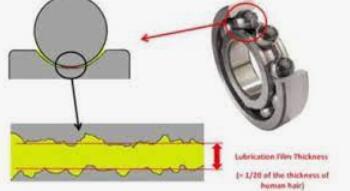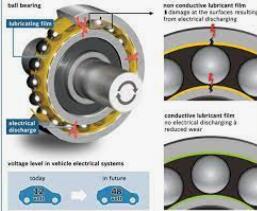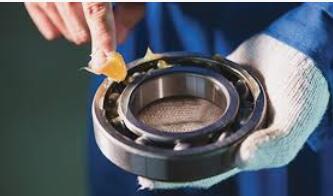The Impact of Lubrication on Bearing Friction and Wear
Discover how lubrication affects bearing friction and wear.
Learn about different lubricants, regimes, and factors influencing effectiveness.
Lubrication plays a critical role in the performance and longevity of bearings, which are essential components in various machinery and mechanical systems.
Bearings facilitate smooth movement between two or more surfaces, reducing friction and wear.
Proper lubrication ensures the efficient operation of bearings by minimizing frictional losses and preventing premature failure.
The impact of lubrication on bearing wear:
-Protection against wear, corrosion, and fatigue
-Improved surface finish and roughness
-Extension of bearing life
In this article, we will explore the impact of lubrication on bearing friction and wear, discussing different types of lubricants,
lubrication regimes, and factors that affect lubrication effectiveness.
Definition of Lubrication and Its Importance in Bearing Performance

Lubrication refers to the process of introducing a lubricant between two moving surfaces to reduce friction and wear.
The lubricant acts as a protective film, separating the surfaces and providing a barrier against direct metal-to-metal contact.
In the case of bearings, lubrication is crucial to their performance and reliability.
Bearings experience various loads, speeds, and operating conditions, which can lead to increased friction and wear.
Without proper lubrication, the surfaces of the bearing components would deteriorate rapidly, causing increased heat generation, elevated operating temperatures, and ultimately, bearing failure.
Lubrication not only reduces friction and wear but also enhances the overall efficiency and lifespan of bearings.
Types of Lubricants

Various types of lubricants are used in bearing applications, including grease, oil, and solid lubricants.
Each type has unique properties and is suitable for different operating conditions.
1.Grease Lubrication
Grease is a semi-solid lubricant composed of a base oil thickened with a soap or non-soap thickener.
It offers excellent adhesion and retention properties, making it suitable for applications where frequent re-lubrication is not feasible.
Grease provides a protective barrier and can resist water washout and contamination to a certain extent.
It is commonly used in applications with moderate operating speeds and temperatures.
2.Oil Lubrication
Oil lubrication involves using liquid lubricants, typically mineral or synthetic oils.
These oils offer good fluidity and provide effective lubrication even at high speeds and temperatures.
Oil lubrication allows for precise control over the lubricant flow rate, making it suitable for applications with varying operating conditions.
It also allows for efficient heat dissipation from the bearing, preventing overheating.
However, oil lubrication generally requires a dedicated lubrication system for proper distribution and maintenance.
3.Solid Lubricants
Solid lubricants, such as graphite or molybdenum disulfide (MoS2), are used in specialized applications where conventional lubricants may not be suitable.
Solid lubricants can withstand extreme temperatures and harsh environments.
They provide a low-friction coating on the bearing surfaces, minimizing wear and reducing the need for frequent re-lubrication.
Solid lubricants are commonly used in high-temperature applications or situations where conventional lubricants may not be compatible.
Lubrication Regimes

Lubrication regimes describe the conditions under which the lubricant film thickness and the extent of contact between the bearing surfaces vary.
There are three primary lubrication regimes: boundary lubrication, mixed lubrication, and hydrodynamic lubrication.
1.Boundary Lubrication
Boundary lubrication occurs when the lubricant film is extremely thin, and the surfaces of the bearing components are in direct contact.
In this regime, friction and wear are not fully eliminated, and there is a higher risk of surface damage.
Boundary lubrication is often encountered during startup, shutdown, or under high loads or low speeds.
2.Mixed Lubrication
Mixed lubrication is a transitional regime where both boundary and hydrodynamic lubrication coexist.
The lubricant film is thicker than in boundary lubrication but not sufficient to completely separate the surfaces.
This regime involves a combination of partial contact and fluid-film separation. Mixed lubrication occurs in applications with moderate loads and speeds.
3.Hydrodynamic Lubrication
Hydrodynamic lubrication is the ideal lubrication regime, where a thick and continuous lubricant film fully separates the bearing surfaces.
In this regime, the lubricant film thickness is greater than the surface roughness, resulting in minimal friction and wear.
Hydrodynamic lubrication is achieved at higher speeds, lighter loads, and with suitable lubricants.
The Impact of Lubrication on Bearing Wear
Proper lubrication significantly reduces friction and wear in bearings, leading to several benefits:
1.Protection Against Wear, Corrosion, and Fatigue
Lubrication forms a protective film that prevents direct metal-to-metal contact between the bearing surfaces.
This protection minimizes wear, reduces the potential for corrosion, and mitigates fatigue failure.
Lubrication also helps distribute the load evenly across the bearing surfaces, further reducing localized wear.
2.Improved Surface Finish and Roughness
Lubrication enhances the surface finish and roughness of the bearing components.
The lubricant fills in microscopic surface irregularities, creating a smoother contact area.
This improved surface finish reduces friction and wear, leading to more efficient operation and increased bearing life.
3.Extension of Bearing Life
Proper lubrication extends the operational lifespan of bearings. By reducing friction and wear, lubrication minimizes the risk of premature failure.
Bearings that are well-lubricated can withstand higher loads, speeds, and operating temperatures, resulting in longer service intervals and reduced maintenance costs.
Factors Affecting Lubrication Effectiveness
Several factors influence the effectiveness of lubrication in bearings.
It is crucial to consider these factors when selecting the appropriate lubricant and establishing a lubrication maintenance plan.
1.Viscosity
The viscosity of the lubricant determines its resistance to flow. It affects the lubricant film thickness and the ability to separate the bearing surfaces.
The correct viscosity is crucial to ensure proper lubrication and prevent excessive friction and wear.
Viscosity requirements vary based on the operating conditions, load, and speed of the bearing.
2.Temperature
Operating temperatures influence the lubricant's viscosity and its ability to maintain a stable film thickness.
High temperatures can lead to oil thinning and decreased viscosity, while low temperatures can cause thickening and increased resistance to flow.
It is important to select a lubricant with suitable viscosity characteristics for the anticipated operating temperature range.
3.Load and Speed
The applied load and rotational speed affect the lubrication regime and the required lubricant properties.
Higher loads and speeds may demand lubricants with higher viscosity and better film-forming capabilities.
Insufficient lubrication under high loads or speeds can result in increased friction, wear, and potential bearing failure.
4.Contamination
Contaminants, such as dust, debris, or moisture, can compromise the lubricating properties of the lubricant.
They can lead to abrasive wear, corrosion, and reduced lubricant effectiveness.
Proper sealing and filtration systems should be in place to minimize the ingress of contaminants and ensure the longevity of the lubricant.
Conclusion
Lubrication is a vital aspect of bearing performance, directly impacting friction, wear, and overall efficiency.
Proper lubrication selection, application, and maintenance are essential for maximizing bearing life and preventing premature failure.
By understanding the different lubrication regimes, types of lubricants, and factors influencing lubrication effectiveness,
engineers and maintenance professionals can optimize bearing performance, reduce downtime, and improve the reliability of machinery and mechanical systems.





